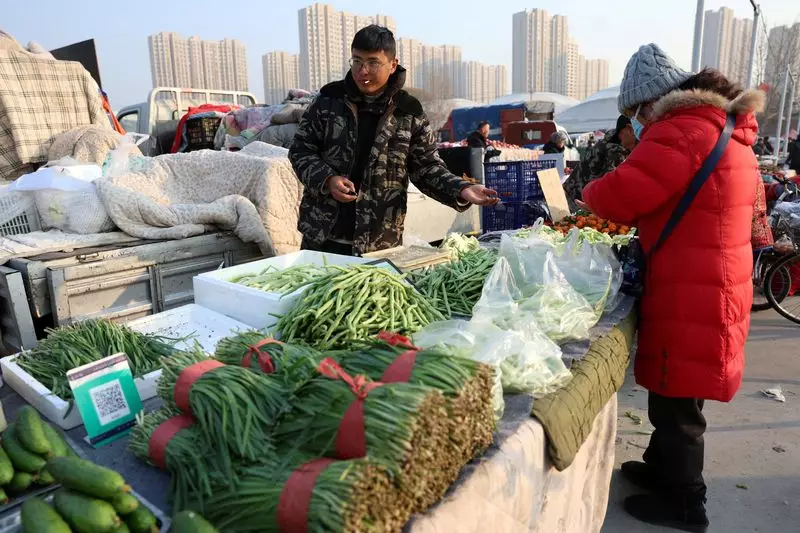In October, China’s consumer price index (CPI) exhibited a distinct slowdown, marking the lowest increase in four months, according to data released by the National Bureau of Statistics. This trend comes at a time when the country’s economic growth is faltering, prompting the government to implement stimulus measures aimed at revitalizing the economy. However, initial reactions to these measures raise concerns about their effectiveness in delivering tangible results.
The latest report indicates that China’s CPI rose merely 0.3% compared to the same month last year, a drop from September’s 0.4% growth. This performance falls short of economists’ anticipations, which had forecasted a 0.4% increase. A notable aspect of the CPI data is the core inflation rate—excluding food and energy prices— which rose by 0.2%, contrasting with the stagnation seen in the prior month. The sluggish response to the stimulus measures is believed to be tied to the celebrations surrounding the Golden Week holiday, which occurred in early October and may have muffled the immediate impact of various economic policies.
A crucial point for analysts is that, while there might be a potential upward trend in CPI in the months ahead, the core inflation remains subdued. Bruce Pang, Chief Economist at JLL, contemplates that this presents a possible opening for the central bank to consider further interest rate cuts in the early stages of the coming year.
The latest stimulus package approved by China’s legislative body, amounting to approximately 10 trillion yuan ($1.4 trillion), seems to focus more on alleviating local governments’ hidden debt burdens than on directly infusing cash into the economy—a choice that many investors had anticipated. The expectation was for a robust fiscal response that could spur greater consumer activity, but the outcomes of the stimulus measures have not met these hopes.
Finance Minister Lan Foan’s comments implying more monetary stimuli focusing on tax policies to elevate the housing market suggest that authorities may still be strategizing their next moves. Given that a substantial portion of China’s household wealth is concentrated in the faltering real estate sector, consumer sentiment is understandably cautious. With households tightening their financial belts, economic pressure continues to mount, leading to increasing deflationary risks.
To compound these challenges, China’s producer prices have entered a deeper state of deflation, with a notable year-on-year decrease of 2.9% in October. This downturn exceeds the expectations of financial analysts, who had anticipated a lesser decline of 2.5%. A critical examination reveals that sectors including petroleum and natural gas extraction, coal processing, and automotive manufacturing are experiencing significant contractions in their pricing structures, indicating a worrying trend for manufacturers and ultimately for GDP growth.
Leading financial institution Goldman Sachs posits that the outlook for both consumer and producer prices remains bleak, projecting a low inflation rate of approximately 0.8% for consumers in the coming year. More disconcertingly, they predict that producer prices may not rebound until the latter half of 2025.
China’s economic landscape is at a pivotal juncture. The government’s decision to implement a significant fiscal stimulus suggests an acknowledgment of these pervasive challenges; however, whether such measures will translate into real economic growth in the short term remains uncertain. Some analysts argue that the government may be holding back further economic ‘ammunition’ to prepare for potential shifts on the global front, particularly in the context of the approaching 2024 U.S. presidential elections.
The prevailing sentiment is one of cautious optimism amongst some economists and researchers, who maintain that properly implemented counter-cyclical adjustments could rejuvenate consumption and invigorate investment practices. Nonetheless, the prevailing deflationary pressures combined with stagnant consumer sentiment highlight the need for comprehensive and responsive policy measures tailored for the current economic climate.
As China navigates these complexities, it is crucial to monitor the resulting impact of governmental policies and the evolution of market dynamics to garner a clearer perspective on the future economic trajectory of the nation.

